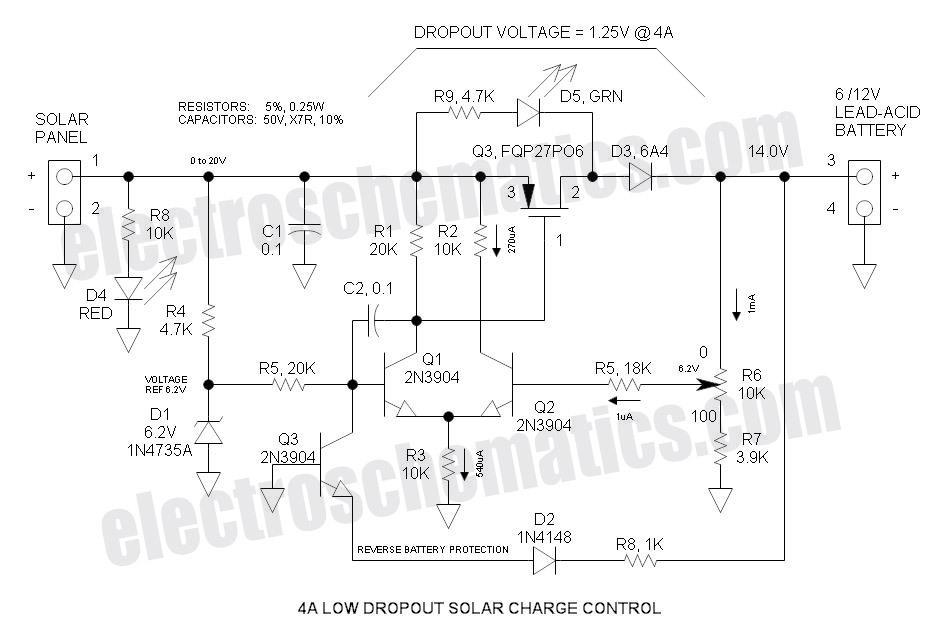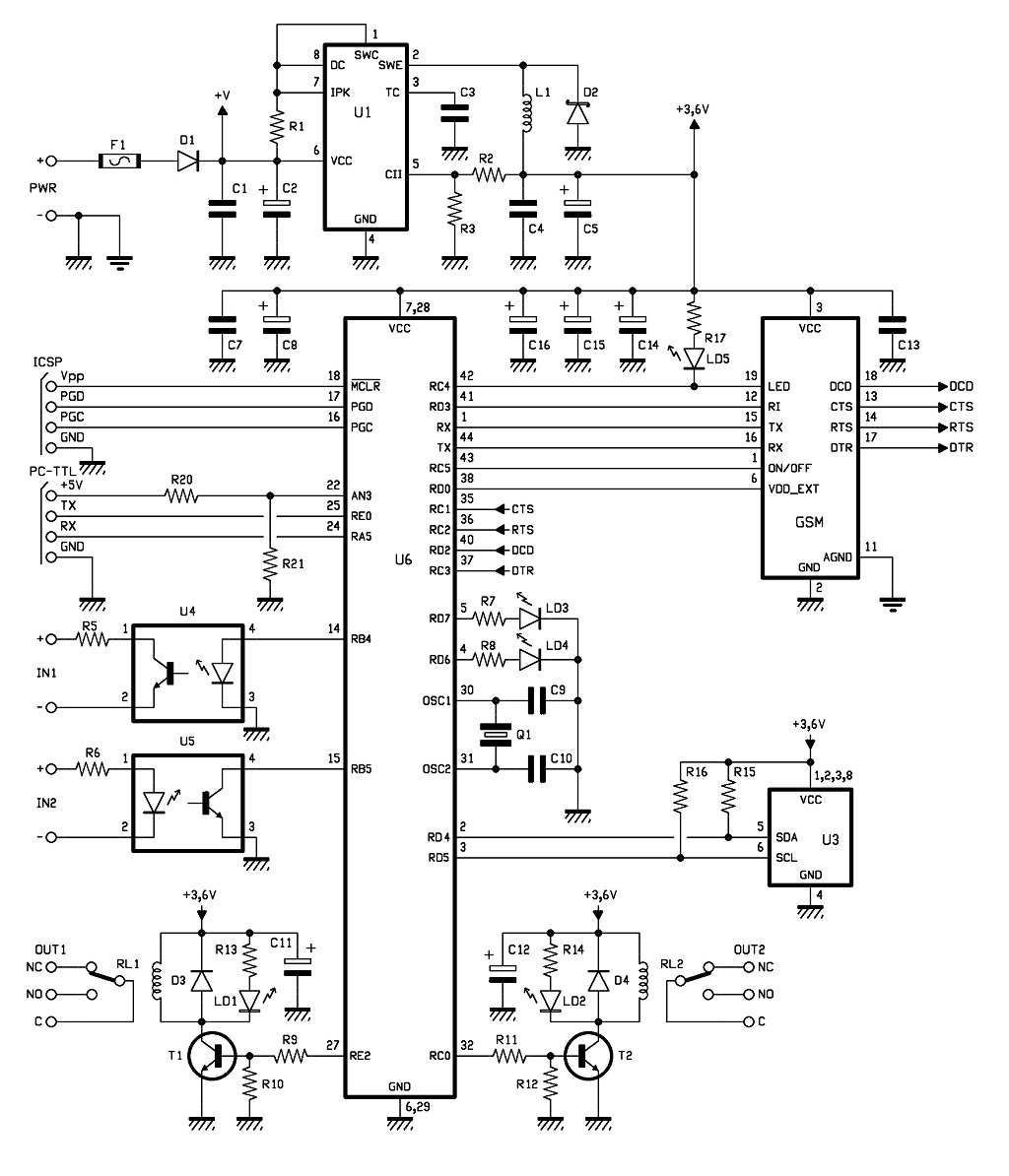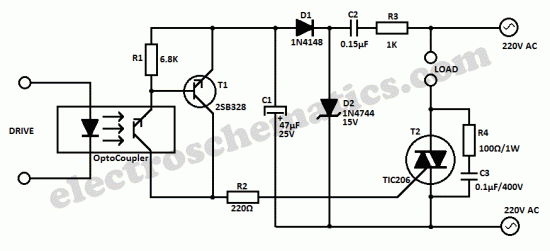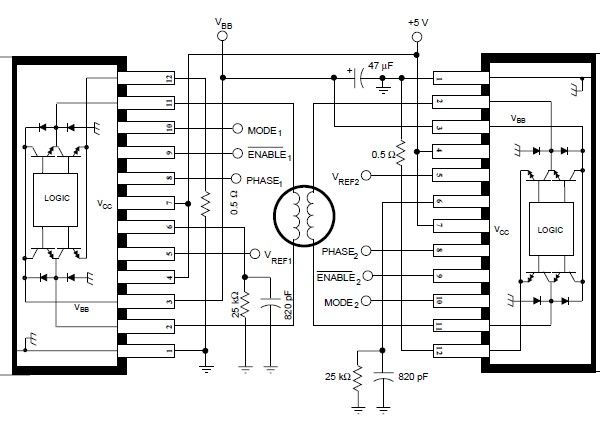
remote control mains switch

As the only electronics engineer in the family and circle of friends, it is sometimes challenging to decline requests for assistance. Recently, a friendly elderly lady in a retirement home sought help regarding her lighting situation. In her room, the light switch by the door and the pull cord above the bed control the ceiling light fitting located in the center of the room. However, she would prefer to operate her standing lamp using these switches, as she does not have a ceiling-mounted light fitting. The standing lamp has an on/off switch in the power cord and is plugged into a power outlet, but it is positioned quite far from the bed, requiring her to navigate in the dark. A wireless power outlet is not a viable option, as the remote control is likely to be misplaced. A practical solution involves purchasing a wireless power outlet and an enclosure large enough to accommodate the remote control and a small piece of prototyping board. On the prototyping board, the circuit should be built according to the accompanying schematic, and the remote control can be carefully opened to solder wires to the push buttons for "on" and "off."
To implement the solution for the elderly lady's lighting needs, a wireless power outlet can be used to control the standing lamp from a distance. The circuit design will involve a prototyping board where connections are made to the wireless remote control's push buttons. The following steps outline the process:
1. **Components Required**:
- Wireless power outlet with remote control.
- Prototyping board (suitable size to fit the remote control).
- Wires for soldering.
- Soldering iron and solder.
- Enclosure for housing the remote and prototyping board.
2. **Circuit Design**:
- Open the wireless remote control carefully to access the internal push buttons.
- Identify the connections for the "on" and "off" buttons. This may require a multimeter to trace the circuit paths.
- Solder wires to the contacts of the "on" and "off" buttons. These wires will connect to the prototyping board.
- On the prototyping board, create a simple circuit that connects the soldered wires to a pair of momentary push buttons. This setup will allow the existing wall switch and pull cord to control the standing lamp.
3. **Wiring and Assembly**:
- Ensure that the prototyping board is securely mounted within the enclosure, allowing easy access to the push buttons.
- Connect the wires from the prototyping board to the corresponding terminals of the wireless remote control.
- Test the assembly by pressing the new push buttons to ensure that they successfully operate the standing lamp.
4. **Final Considerations**:
- Ensure all connections are secure and insulated to prevent short circuits.
- Consider labeling the buttons for clarity, especially for the elderly user.
- Place the enclosure in a convenient location near the existing light switches for ease of use.
This approach not only provides a practical solution for the elderly lady's lighting needs but also enhances her independence by allowing her to control the standing lamp from her bed without the need for a traditional light fitting.As the only electronics engineer in my family and circle of friends, it is sometimes not possible to evade an appeal for help. This time the request came from a friendly elderly lady in a retirement home. In her room the light switch by the door and the pull cord above the bed operate the light fitting on the ceiling in the middle of the room.
How ever, she would prefer that her standing lamp was operated by these switches instead, since she does not actually have a light fitting mounted on the ceiling. This standing lamp has an on/off switch in the power cord and is plugged into a power point. However, it stands rather far from the bed so that she always has to find her way in the dark. A wireless operated power point is not really a consideration, because it is just a matter of time before the remote is lost.
Or maybe not Behold a feasible circuit. Buy a wireless power point and an enclosure that is big enough for the remote control and a small piece of prototyping board. On the proto-typing board build the circuit according to the accompanying schematic and (carefully) open the remote control and solder wires to the push buttons for ½on ½ and ½off ½.
🔗 External reference
To implement the solution for the elderly lady's lighting needs, a wireless power outlet can be used to control the standing lamp from a distance. The circuit design will involve a prototyping board where connections are made to the wireless remote control's push buttons. The following steps outline the process:
1. **Components Required**:
- Wireless power outlet with remote control.
- Prototyping board (suitable size to fit the remote control).
- Wires for soldering.
- Soldering iron and solder.
- Enclosure for housing the remote and prototyping board.
2. **Circuit Design**:
- Open the wireless remote control carefully to access the internal push buttons.
- Identify the connections for the "on" and "off" buttons. This may require a multimeter to trace the circuit paths.
- Solder wires to the contacts of the "on" and "off" buttons. These wires will connect to the prototyping board.
- On the prototyping board, create a simple circuit that connects the soldered wires to a pair of momentary push buttons. This setup will allow the existing wall switch and pull cord to control the standing lamp.
3. **Wiring and Assembly**:
- Ensure that the prototyping board is securely mounted within the enclosure, allowing easy access to the push buttons.
- Connect the wires from the prototyping board to the corresponding terminals of the wireless remote control.
- Test the assembly by pressing the new push buttons to ensure that they successfully operate the standing lamp.
4. **Final Considerations**:
- Ensure all connections are secure and insulated to prevent short circuits.
- Consider labeling the buttons for clarity, especially for the elderly user.
- Place the enclosure in a convenient location near the existing light switches for ease of use.
This approach not only provides a practical solution for the elderly lady's lighting needs but also enhances her independence by allowing her to control the standing lamp from her bed without the need for a traditional light fitting.As the only electronics engineer in my family and circle of friends, it is sometimes not possible to evade an appeal for help. This time the request came from a friendly elderly lady in a retirement home. In her room the light switch by the door and the pull cord above the bed operate the light fitting on the ceiling in the middle of the room.
How ever, she would prefer that her standing lamp was operated by these switches instead, since she does not actually have a light fitting mounted on the ceiling. This standing lamp has an on/off switch in the power cord and is plugged into a power point. However, it stands rather far from the bed so that she always has to find her way in the dark. A wireless operated power point is not really a consideration, because it is just a matter of time before the remote is lost.
Or maybe not Behold a feasible circuit. Buy a wireless power point and an enclosure that is big enough for the remote control and a small piece of prototyping board. On the proto-typing board build the circuit according to the accompanying schematic and (carefully) open the remote control and solder wires to the push buttons for ½on ½ and ½off ½.
🔗 External reference





